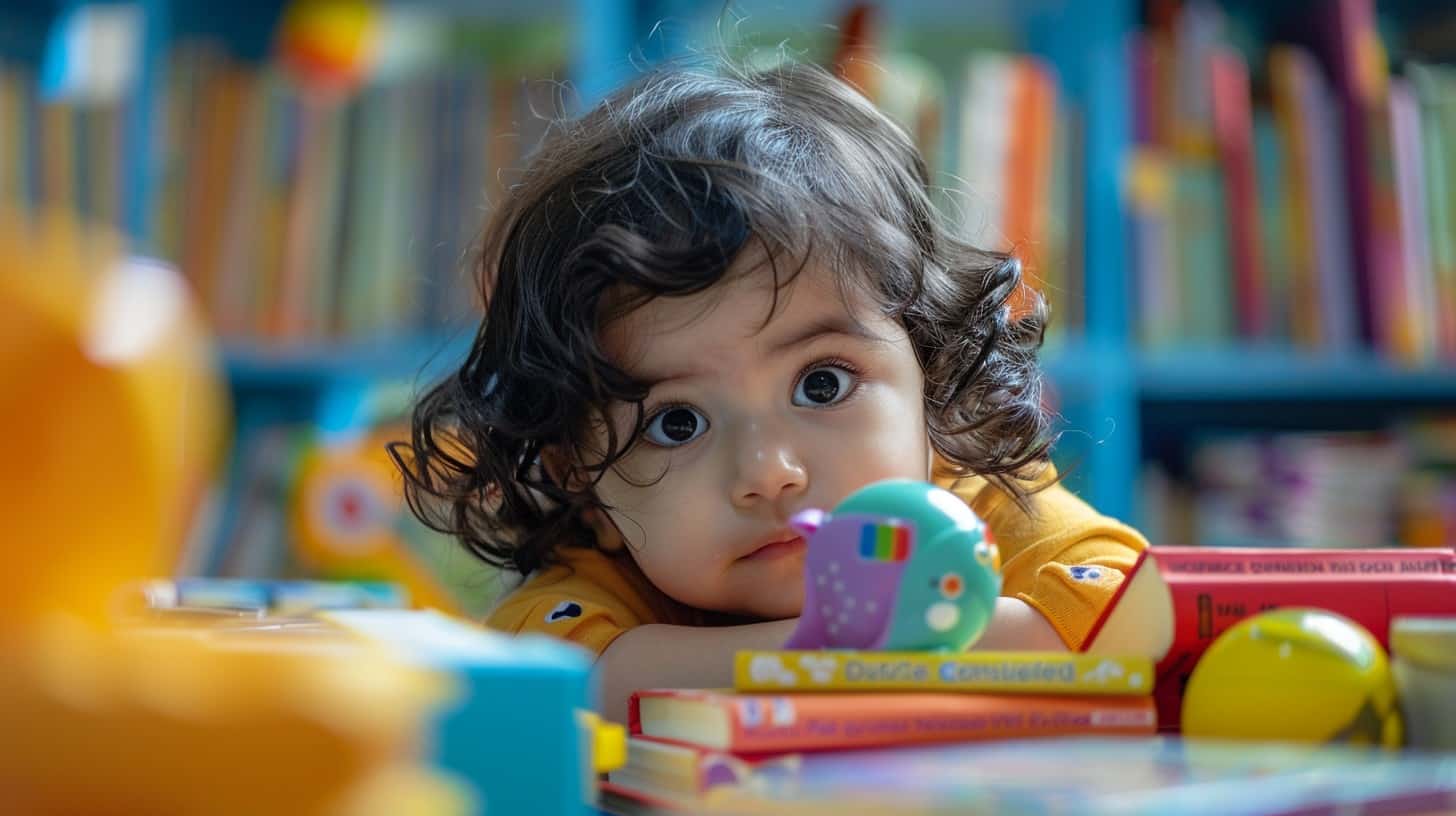Getting kids to hit the books with gusto can be a real head-scratcher for parents. Sincere praise, it turns out, can turn the tide. This article will throw you a line—highlighting seven key drivers that light up a child’s desire to learn and their mighty impact.
Let’s get cracking!
Key Takeaways
Kids learn better when we praise their efforts, not just outcomes. Cheer them on for trying hard.
Setting goals helps children stay motivated. They feel awesome hitting targets and celebrating wins.
Playing with friends teaches kids important life skills and makes learning a fun team activity.
Using games and technology turns tricky subjects into exciting adventures, making learning enjoyable.
Encouraging kids to explore topics they love boosts their confidence and eagerness to learn more.
Table of Contents
Understanding the Motivation Behind Learning
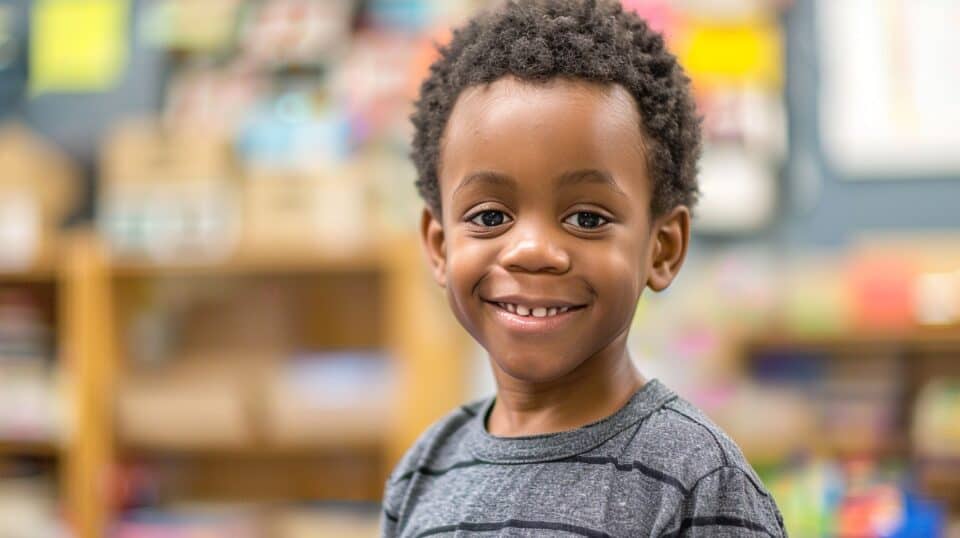
Kids want to learn for many reasons. They might aim to get gold stars from their teachers or high-fives at home.
The Desire to Please Adults
Children often aim to make their parents and teachers happy. They believe that doing well can bring them praise and love. This drive is strong, especially in young minds eager for approval.
It’s like when they show you a drawing—they look up with those big eyes, waiting for you to say, “great job!” That moment matters a lot to them.
Praise works wonders here. When adults cheer on efforts, not just outcomes, kids feel motivated. They learn that trying hard is valuable, even if things aren’t perfect the first time around.
This builds self-confidence and teaches kids about growth mindset—the idea that skills can improve with practice. So next time your child attempts something new or difficult, remember how much your words of encouragement mean to them.
The Aim to Perform Well in School
Kids want to ace their tests and get gold stars. They hear “good job” and feel like superheroes. It’s all about feeling smart and capable. Parents play a huge part in this. Your cheers matter more than you think.
Imagine your kid solving a tricky math problem or reading a tough word out loud. Now, picture your reaction—big smiles, high-fives, maybe even a treat for hard work.
This is where things like psychoeducational testing come into play. If a child struggles, it’s not the end of the world! Places like Possibilities Clinic help find out why learning feels so tough sometimes.
They check if there are any hiccups in how your child understands information or remembers things for school tests or homework assignments – sort of detective work for the brain! It’s about giving kids tools to succeed and reminding them that being curious learners can also be fun.
The Urge to Make Friends
Making pals is a big deal for kids. It’s like planting seeds in a garden–friendships need the right soil, sunlight, and water to grow. This urge isn’t just about having someone to play tag with at recess.
It’s way deeper. Being part of a group gives them that warm feeling of belonging somewhere. They learn life skills by sharing toys, deciding who gets to be the leader in games, and comforting each other when things go south.
This drive also sparks their learning engines in surprising ways. Imagine your little one eager to pick up science facts or mastering reading because they want to impress their new friends or share exciting stories with them.
Plus, hearing “You did great!” from peers acts like magic dust on their motivation levels, sprinkling feel-good vibes that make tackling challenges fun rather than frightful. So yes, those playground bonds do more than just fill up birthday party lists—they’re building blocks for teamwork abilities and pumping up their self-esteem tank too!
The Curiosity to Understand the World
Kids make friends, and then they start asking the big questions. Why is the sky blue? What makes rainbows? This questioning marks a critical shift as their focus turns outward. They become little explorers hungry for knowledge about everything around them.
Their minds are buzzing hives of curiosity, always ready to discover new facts and understand how things work. From counting stars to learning why leaves change color, every day is an adventure in learning.
They’re not just playing; they’re gathering pieces of the puzzle that is our planet, eager to fit them all together. This thirst for discovery fuels their motivation to learn – diving into books, experiments, and online courses with enthusiasm that’s contagious.
The Impact of Praise on a Child’s Motivation to Learn

A simple “Great job!” can light up a kid’s face and fuel their desire to learn even more. Hungry for more insights? Stick around!
Reinforcing Positive Behavior
Kids thrive on sincere praise. It’s like sunlight for plants. Every “Great job!” or “I’m proud of you” tells them they’re on the right track. This kind of positive reinforcement boosts their drive to keep going, even when tasks get tough.
It taps into feelings of accomplishment and belonging, key ingredients in the recipe for motivation.
Letting kids know we see their effort—even more than just the end result—matters a lot. It teaches them that trying hard is valuable in itself. So, celebrate both big wins and small steps forward alike.
Whether they aced a test or simply didn’t give up on a hard math problem, every moment is an opportunity for encouragement and growth.
Rewarding Effort Rather Than Outcome
After highlighting the power of positive reinforcement, let’s shift gears to focus on something equally crucial – valuing hard work over just the end result. Praising a child’s effort can light up their world like fireworks on the Fourth of July.
It sends a message that their dogged determination matters more than the final score or grade.
This approach transforms challenges into stepping stones rather than stumbling blocks. A child learns that falling isn’t failing; it’s part of mastering new skills – from tying shoelaces to solving complex math problems.
This mindset lays a solid foundation for lifelong learning, bolstering both self-determination and resilience against setbacks. So, next time your little one puts in the effort, whether they ace it or not, make sure your applause is loud and clear – because every attempt is worth celebrating.
How Setting Goals Can Foster Motivation
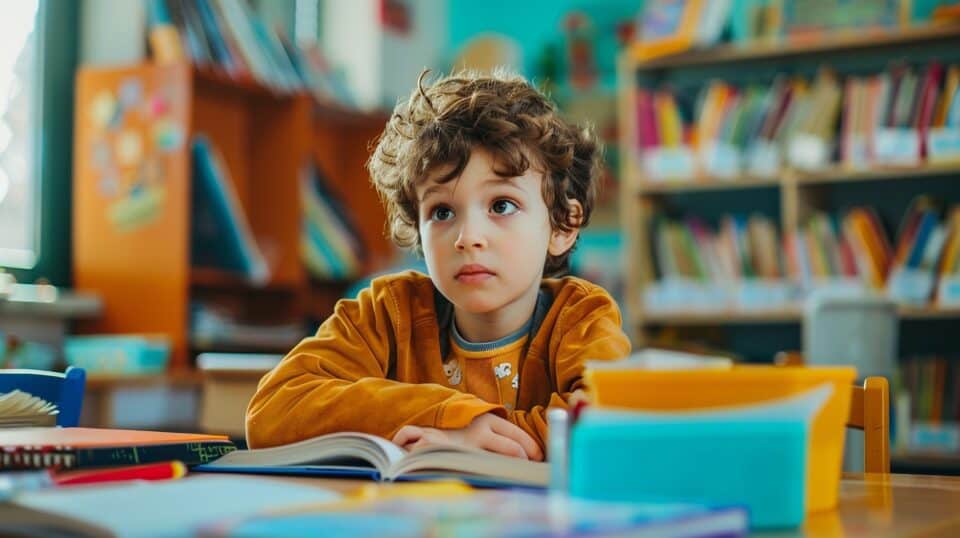
Setting goals is like planting a seed. It starts off small, but with the right care, it can grow into something amazing. Think of goal setting as a game where kids learn to hit their targets and feel great about it.
This approach turns learning into an adventure, pushing them to keep moving forward because they want to see what’s next. So let’s get our youngsters excited about hitting those milestones!
Encouraging Achievement
Seeing your child hit a goal they’ve set is like watching them score the winning point in a game—it’s a rush. It’s all about giving kids clear targets to aim for. Setting up these goals makes it more than just homework; it turns into a mission.
They’re not just working to get it done, they’re aiming to conquer. And here’s the kicker, using planners can transform this journey by breaking down their missions into exciting quests.
Let’s not forget the power of celebrating those wins. Whether it’s mastering multiplication or finishing a book report, every achievement deserves its moment in the spotlight. Imagine setting up a little ceremony at home—maybe with certificates or badges—for each milestone they reach.
This not only boosts their morale but also sharpens their thirst for more victories. Planning fun activities as rewards? That’s the cherry on top! It shows them that hard work pays off and fun awaits around every corner of effort and perseverance.
Celebrating Accomplishments
Throwing a high-five or planning a mini party after your child achieves their goals does more than just put a smile on their face. It tells them loud and clear: “Your hard work paid off, and we’re proud of you!” Goals give kids a finish line to race towards.
When they cross it, celebrating that victory teaches them the sweet taste of achievement. This isn’t about throwing confetti for every tiny thing but marking those genuine moments of growth with enthusiasm.
Think back to setting up milestones in their learning journey—maybe mastering phonics or wrapping up a big project on the planets. Celebrating these wins can take many shapes; maybe it’s an extra hour of screen time, picking out a new toy from the store, or even better, something related to what they learned, like building a model rocket together.
These rewards fuel their desire to set new goals and conquer them, turning learning into an exciting adventure rather than another chore on the list. Plus, it builds confidence—not just in school subjects but in life itself as they realize they can achieve anything with effort and perseverance.
The Role of Technology and Games in Motivating Kids
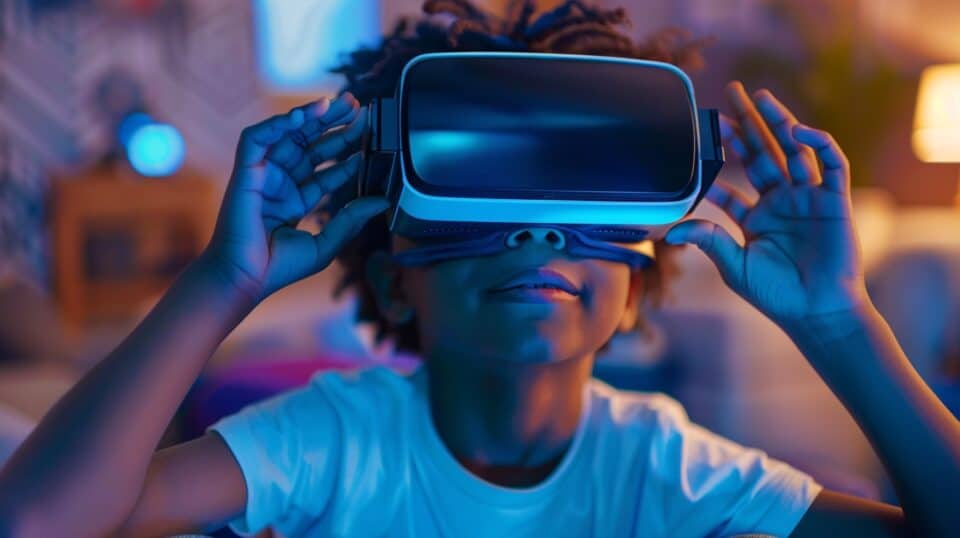
Technology and games are like a secret sauce that makes learning a blast for kids. Think of them as the chocolate chip in the cookie of education – it’s what gets them excited to bite in! With educational applications and interactive tools, learning shifts from being a chore to an adventure they can’t wait to explore.
So, let’s get ready to turn those screens into learning machines that spark curiosity and joy in every child. Dive deeper with us and see how technology transforms education into an experience they’ll love.
Benefits of Educational Games
Educational games are like secret weapons for brain growth. They make learning a blast by turning tricky subjects into fun challenges. Kids get to jump into adventures where their skills shape the outcome, from solving puzzles to building cities.
This hands-on approach sparks joy in discovery and sticks better than traditional memorization.
Games also dress up critical thinking and problem-solving in colorful graphics and cool stories. Picture kids navigating mazes—each turn teaches them strategy and patience without them even realizing it.
Plus, these games often adapt to your child’s pace, making sure they’re always climbing just the right hill of challenge.
Making Learning Fun Through Interactive Technologies
Kids love games — that’s a fact. Now, imagine turning those hours spent on tablets into learning adventures. Interactive technologies do just that. They transform math puzzles into treasure hunts and history lessons into time travel experiences.
It’s like sneaking vegetables into spaghetti sauce; children learn without even realizing it! Plus, these high-tech tools adjust to each child’s pace, making frustration a thing of the past.
With apps that have storytelling robots and virtual reality excursions to ancient civilizations, education has never looked cooler. Picture your child exploring the pyramids or solving complex problems with the help of an avatar friend — all from your living room couch.
These innovative approaches not only keep them glued but also cater to their curiosity and thirst for knowledge in a dynamic way. And guess what? They’re building digital skills while they’re at it, preparing them for a future we can hardly predict.
The Importance of Making Learning Social
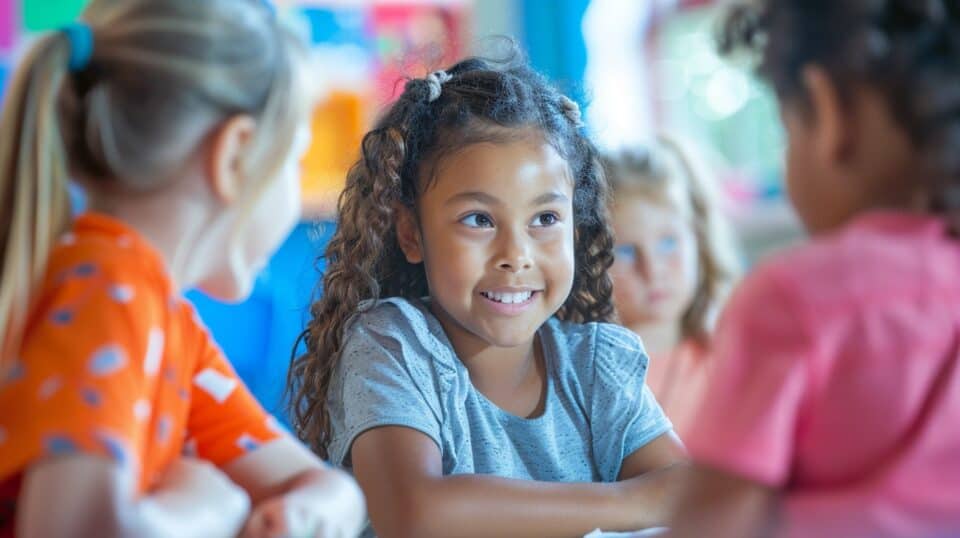
Sharing ideas and working together turns learning into a team sport. Dive in to see how this can change the game for your child!
Promoting Healthy Competition
Healthy rivalry lights a fire under kids, pushing them to stretch their limits. Picture a sports day where everyone’s gunning for the gold, but it’s not all about crossing the finish line first.
It’s about cheering for your buddy and slapping high-fives, even if they beat you by a hair. This kind of competition teaches valuable lessons about striving for personal bests while rooting for others.
Let’s sprinkle that competitive spirit into learning. A spelling bee turns words from chore to challenge; science fairs transform group projects into quests for discovery. These aren’t just contests – they’re fun ways to learn grit, resilience, and the joy of shared achievements.
They show kids it’s cool to try hard and that winning feels sweetest when everyone has given their all.
Fostering Collaboration and Teamwork
Kids thrive on teamwork… it’s like mixing different flavors of ice cream and getting a delightful new taste. Projects where they can choose their roles boost this spirit. Imagine a puzzle; each child is a piece, bringing unique shapes and colors to the table.
Together, they complete the picture, learning that every role counts. This approach taps into intrinsic motivation and strengthens social bonds.
Group games act as mini-societies teaching critical life lessons—sharing ideas, celebrating together when they win, or picking each other up in defeat. It’s all about creating an environment where kids feel valued for their contributions.
Plus, project-based education gives them a real sense of control over their learning journey—a key to unlocking intrinsic motivations for group success. This method not only makes kids eager learners but also prepares them for the emotional rollercoaster of real-world relationships and teamwork challenges.
The Significance of Play in Learning

Play isn’t just fun and games—it’s a serious part of learning. It’s like the secret sauce that makes lessons stick, without kids even realizing they’re learning something new. So, let’s jump into this playground of knowledge together and see what adventures await!
Encouraging Imaginative Play
Imaginative play sparks a child’s creativity and opens doors to new worlds in their minds. Think of it as the key to unlocking their inner storyteller, architect, or explorer. By diving into make-believe adventures, kids learn how to solve problems, express themselves, and understand others’ feelings better.
It’s like they’re the authors of their own stories—each toy or game piece a character with endless possibilities.
Give them blocks, dolls, or dress-up clothes and watch their imaginations take flight. These aren’t just toys; they’re tools for building castles in far-off lands or creating epic tales of friendship and courage.
Encouraging this kind of play is crucial—it nurtures emotional development and lays the foundation for lifelong learning. Plus, it’s pure joy watching them grow smarter each day as they dream up new adventures that stretch beyond the ordinary.
Emotional Development Through Play
Play isn’t just fun and games. It’s a key part of how children grow emotionally. Think about it—when kids play, they’re not just moving toys around. They’re learning to work through feelings, make friends, and solve problems.
This kind of play helps them understand their own emotions and those of others too.
Sincere praise during play boosts this even more. It shows kids that growing up involves understanding and managing their feelings in a healthy way. When parents cheer on their child for sharing or playing well with others, it teaches autonomy in learning, too.
This means kids feel good about making decisions and solving conflicts on their own during playtime activities like imaginative role-play or group projects.
The Influence of Interests and Skills on Motivation
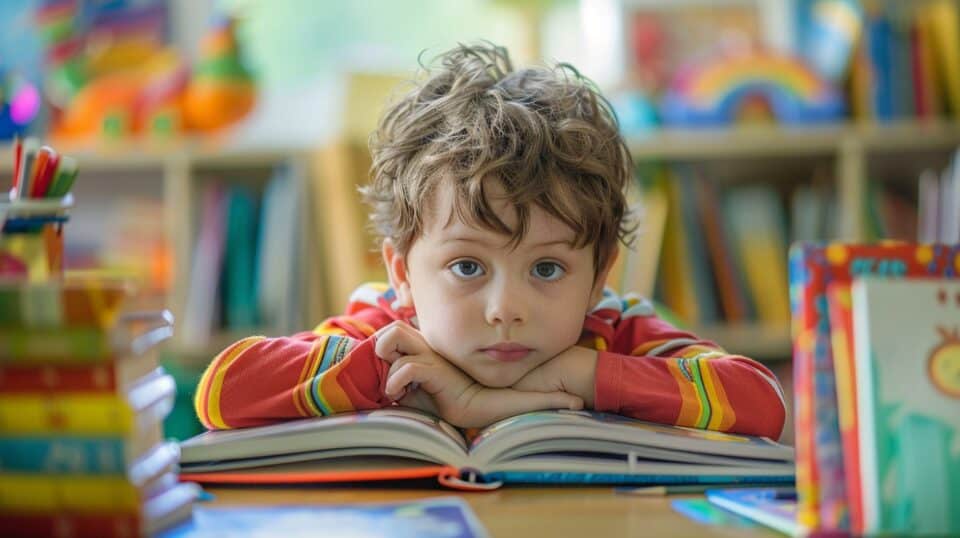
When kids dive into activities they love, their eagerness to learn skyrockets. Imagine a child who adores painting—give them a brush, and watch their motivation paint the room! It’s like magic; when we align learning with their passions and strengths, everything clicks.
Suddenly, that tough math problem isn’t so boring if it’s about calculating scores for their favorite sport. And reading? Hand them a book on dinosaurs or space explorations, and you’ll have to remind them it’s bedtime.
Skills play a huge part too. Every small win in something they’re good at boosts confidence faster than a supercharged rocket. Think of it as stacking building blocks—the higher the tower (or self-belief), the more they want to keep going.
So, why not turn this page and jump into an adventure where interests meet skills? Let’s make learning not just necessary, but irresistible!
Focusing on Child’s Interests
Kids grow up so fast, and their interests change like the seasons. Sharing activities that you loved as a kid can spark their curiosity. It could be anything—from baking cookies together to building model airplanes.
These shared moments are not just about fun; they’re stepping stones for your child’s motivation to learn.
Let’s talk gadgets and gizmos—technology is a big deal in today’s world. Encouraging your young ones to tinker with computers, get hands-on with robotics, or even snap photos can light a fire under their passion for learning.
By focusing on what grabs their attention, you lay the groundwork for a lifelong love of discovery. Remember, it’s all about making learning an adventure they’re excited to embark on every day.
Developing Skills to Boost Confidence
Focus on a child’s passions to help them grow more confident. For example, if they love music, encourage them to learn an instrument. This not only helps with fine motor skills but also gives them a sense of accomplishment.
As they get better at playing tunes, their self-esteem skyrockets.
Incorporate educational playthings into their routine as well. Building blocks and puzzle-solving games do wonders for problem-solving abilities and creativity. Each completed project boosts their confidence bit by bit.
And remember, sincere praise goes a long way in reinforcing their efforts and successes, making them eager to tackle new challenges.
How to Foster Good Learning Habits

To foster good learning habits, lead by example and praise the journey, not just the destination. Keep reading to find out how this simple trick can turn homework into a breeze.
Inspiring With Action
Kids watch us all the time. They see how we handle challenges, celebrate victories, and even how we learn from mistakes. By being active role models, parents and teachers show children that learning isn’t just about reading books or doing homework.
It’s about exploring, asking questions, and trying new things—even when they seem hard at first.
Let’s make our actions speak loud. Start a small project with your child that sparks their interest. Guide them through setting manageable targets and taking steps towards achieving them.
This process teaches persistence and resilience—two key ingredients for lifelong learning. Plus, it’s a chance to have fun together while boosting their confidence in their abilities.
Remember, every big achievement starts with the courage to begin.
Building Persistence and Resilience
Teaching kids to stick with tasks, even when tough, lays the groundwork for resilience. It’s like a muscle—the more they use it, the stronger it becomes. Encourage them to view challenges not as barriers but stepping stones.
When they stumble, show them how each misstep is a chance to learn and grow stronger. This mindset shift—from seeing failure as an end to viewing it as a beginning—is key.
Embracing Carol Dweck’s growth mindset strategy plays a pivotal role here. Celebrate their effort over success; this teaches that hard work pays off in learning and problem-solving skills development.
And don’t forget—every small achievement deserves recognition! Whether solving a difficult puzzle or finishing homework without giving up, these victories boost their confidence and fuel persistence.
FAQs About What Motivates a Child to Learn
What lights a fire under kids to start learning?
Kids get fired up to learn when they find something that tickles their fancy, like a toy or game that’s more than meets the eye. It could be as simple as building blocks or a puzzle that makes them think, “Hey, this is kind of cool!” Plus, feeling like they belong and are part of a team can make all the difference.
How does playing tag help my child in school?
Believe it or not, running around and playing games like tag isn’t just for kicks. It teaches kids important stuff without them even knowing it! They learn about taking turns, working together, and even sharpening those quick-thinking skills—all while having a blast.
Why do some teens roll their eyes at homework but will spend hours on a project they care about?
Teens are funny creatures. If something feels like it’s being shoved down their throat—like homework—they might back off fast. But give them something they’re really into, maybe designing an app or painting a mural for charity; suddenly there’s no stopping them! It’s all about what clicks with their interests and making them feel good about what they’re doing.
Can gold stars and pizza parties really make my kid love math?
Here’s the scoop: Kids love rewards—it’s like finding treasure for doing something cool! While gold stars on charts and pizza parties can make learning fun in the short run (who doesn’t want another slice?), what really sticks is when kids want to learn for themselves—that inner spark!
My child has dyslexia; how can I help keep her motivated?
Learning can be tough when words look like alphabet soup on the page. The key? Make sure she knows she’s not alone and celebrate every win, big or small—like decoding a tough word correctly! Tools designed specifically for dyslexia can turn reading from a chore into an adventure.
Does hanging out with friends have anything to do with how well my kid does in school?
You betcha! Friends aren’t just there for sharing snacks; they’re also cheerleaders, saying “You’ve got this!” Having pals who value hitting the books makes studying way cooler than going solo—and helps everyone aim higher together.
